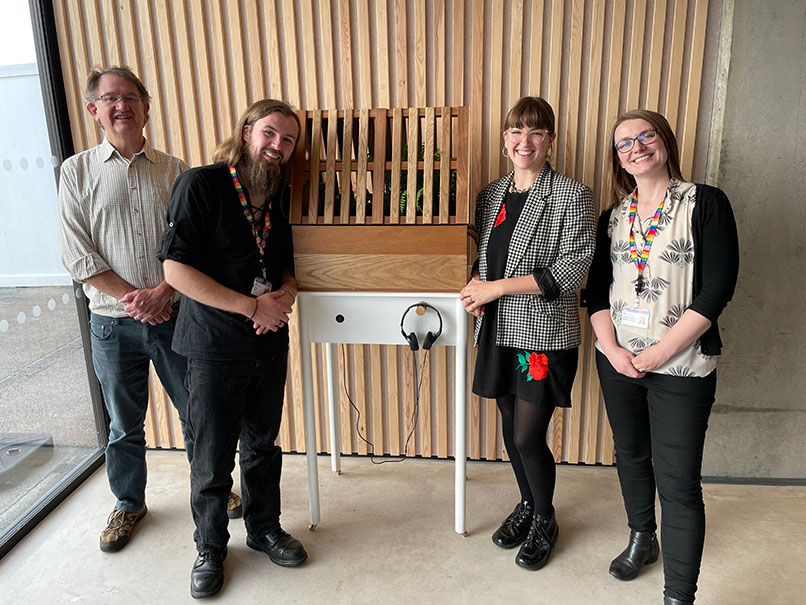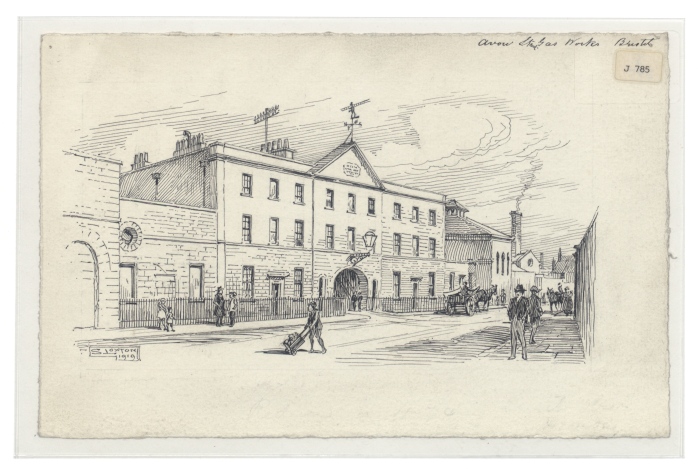History of innovation in BDFI's home
Bristol Digital Futures Institute moved (known as ‘The Sheds’ during renovations) at 65 Avon Street, Temple Quarter Enterprise Campus, in 2022. The new research facilities were the former headquarters of the Bristol Gas Company, and since, a Vauxhall Drive Garage. In preparation for the move we investigated the links to social and technical innovation and change in Bristol, and how it has shaped the lives of local people, economy and environment.
The big issue
Innovations in St Philips, Bristol 200 years ago mirror transformations to the way we live and work today. This project sheds light on how a corner of St Philips became a centre of innovation for Bristol and examines the social and industrial history of our new buildings.
We are considering our role as stewards of this site to ensure that its histories are shared, represented and embedded into the renovations, restorations and the Institute’s current ethos and practices.
Our response
Historians have now highlighted both the positive and negative impacts of this new technology for the city. Extensive archival research has been undertaken on the history of the Gasworks and its influence on the city of Bristol in the nineteenth century, followed by the collection of oral and written living histories from those who have, themselves or through family memory, have connection to the site in a working or residential capacity.
Issues around working conditions, industrial action, the impact of war, the role of women in the workplace, the development of the night-time economy, crime, pollution, domestic life and the transformation of local businesses and industry all feature in the report.
Highlights include:
- How improved lighting meant that people could now work at night, paving the way for the night-time economy and changing concepts of time away from agricultural rhythms.
- The new gasworks, although dangerous, represented a steady and secure new source of employment.
- The Bristol Gas Company can be linked to every large industry in Bristol during the last 200 years including Filton Aeroplane company, Wills Tobacco and Frys and Sons. The Bristol Old Vic was also an early customer.
- During the Second World War George Jones, gas attendant knocked two incendiary bombs off the top of the Folly Lane gas holder near Avon Street, receiving the George Medal for his efforts. There is a plaque on the wall on the corner of Folly Lane and Days Rd.
- Gas changed the lives of women in Bristol, not just through new employment opportunities but in the home being sold for cooking and washing as the ‘fuel of the future’.
- Although gas was a significant source of pollution, with by-products entering the air and water-systems, the industry was effective at marketing itself as environmentally-friendly, winning awards from the Royal Sanitary Institute.
The benefits
The aim of this project is to inspire academic questions about the legacy of this kind of innovation. For instance, pollution through the gas industry was sited locally but pollution from digital industries may be created on different continents or how working communities differ today in terms of location and commuting to the work-based areas and communities which dominated areas like St Philips.
The development and production of the gas to fuel Bristol has many parallels with Bristol Digital Futures Institute. Issues around who can afford to access the benefits of innovation, mistrust of technologies where changes happen to rather than with communities, development of intellectual networks and pollution all draw out an opportunity for the Institute to learn from the legacy of its new home.
The hope is that the histories of the Avon Street gasworks will inspire those who visit, work in and collaborate with our Institute to take forward the principals of developing transformative sociotechnical approaches to deliver a more inclusive, sustainable and prosperous future.
Connecting with the public
BDFI appealed for local people to come forward with memories, images, documents or artifacts associated with The Gas Shed or Retort House, the former headquarters of the Bristol Gas Company or its later use as the Vauxhall Drive Garage. These memories have been collated as part of an art project with Ellie Shipman, who has created a permanent installation in the new building.

The sculpture, fabricated by Jack Stiling, is a representation of a Wardian Case, a Victorian technology developed to protect indoor plants from the fumes of gas when used in the home. The piece therefore invites reflection on the pasts and futures of socio-technical innovation, drawing connection between the site’s historical position as the Gas Works and present occupation by the BDFI.
There is an audio piece embedded within the sculpture for visitors to listen to. This combines oral histories gathered with those whose families worked at the site and who lived in the area, with information about the site provided by local historians. Featured in this piece were Garry Atterton, Pete Insole, James Watts, the Barton Hill History Group and local residents Gill, Bern, Geraldine and Richard, to whom we owe massive thanks for sharing their knowledge and memories. Listen to the oral histories.
Find out more about this public artwork project here, or come and visit it in the foyer of our building!
What’s next?
If you are interested in discussing your memories of the site and area with others who remember it, Barton Hill History Group offer a wonderful forum in which to do so. As the project winds down we will not be conducting further oral history interviews, but are still happy to invite contributions of memories via bdfi-enquiries@bristol.ac.uk.
How is BDFI involved?
We are managing this research and outcomes for this project.
Researchers
Funders
- BDFI
Resources
Full report: History of Bristol Gasworks (June 2022) (PDF, 6,560kB)
Dr James Watts blog: Avon Street, Gas, and Bristol
YouTube video: History of Bristol Gasworks with James Watts
Lena Ferriday blog: The Streets Seen and ‘The Sheds’ Smelled
Ellie Shipman art project: Injurious Effect
